The 2080 Monster Census: Forecasting Species We Haven’t Named Yet
By 2080, scientists will predict thousands of unknown species using advanced technology, ecological data, and genetic modeling. Discoveries will include creatures with unusual morphologies, sizes, and habitats, shaped by climate change and habitat loss. Breakthroughs in remote sensing, DNA analysis, and AI will speed up these forecasts. As new species emerge, they’ll profoundly impact ecosystems and conservation efforts. Want to explore how these predictions may reshape our understanding of biodiversity? Keep exploring to see what’s ahead.
Key TakeawaysAdvances in remote sensing, AI, and environmental DNA sampling enable prediction and identification of previously unknown species.Climate change and habitat destruction are accelerating species displacement, increasing the likelihood of discovering novel organisms by 2080.Morphological diversity, including cryptid-like forms and size ranges from microscopic to colossal, will challenge current taxonomy.Ecological modeling and citizen science collaborations will enhance forecasting accuracy of undiscovered species’ habitats and behaviors.Ethical considerations and conservation strategies are essential to responsibly manage the impact of new species on ecosystems.The Drivers Behind the Rising Number of Unknown Species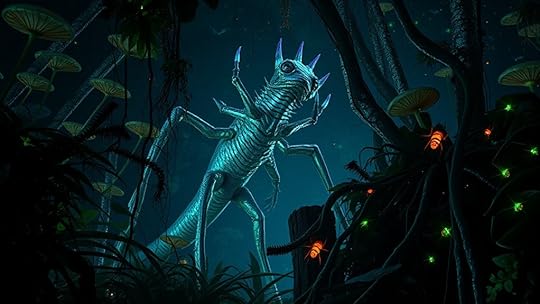
The increasing number of unknown species can be attributed to several interconnected factors. Deep sea exploration uncovers vast, uncharted territories where many creatures remain undiscovered. As you venture into these depths, you find evidence of life forms that challenge existing knowledge. Additionally, fossil analysis reveals ancient species previously unknown, suggesting that Earth’s biodiversity has been more extensive than documented. Advances in technology enable scientists to explore remote environments and analyze fossils more effectively, leading to the discovery of species that were hidden or thought extinct. These efforts continuously expand our understanding of the planet’s biological diversity, making it clear that many species still await discovery in the depths of our oceans and beneath layers of sediment.
Methodologies Used in Predicting Unseen Creatures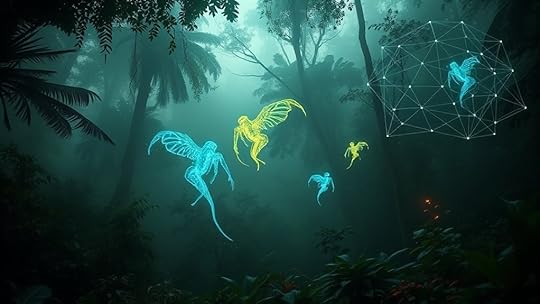
You can use genetic modeling techniques to identify potential features of undiscovered species based on known DNA patterns. Ecological data analysis helps you understand environments where new creatures might exist, guiding your predictions. Machine learning predictions combine these methods to improve accuracy in forecasting unseen creatures.
Genetic Modeling TechniquesGenetic modeling techniques have revolutionized the way scientists predict unseen creatures by analyzing existing genetic data to infer the characteristics of unknown species. By examining patterns of genetic diversity, you can identify how different traits have evolved and how they might manifest in undiscovered species. These methods trace evolutionary pathways, revealing how certain genes have changed over time and predicting future adaptations. You utilize algorithms that compare known genomes to generate models of potential genetic combinations in unseen creatures. This approach helps you understand possible physical features, behaviors, and ecological roles. As a result, genetic modeling provides a powerful, data-driven foundation for forecasting species that haven’t yet been observed, expanding your ability to anticipate the biodiversity of the future.
Ecological Data AnalysisBuilding on genetic insights, ecological data analysis offers another powerful approach to predicting unseen species. By examining environmental patterns, habitat types, and species interactions, you can infer where undiscovered creatures might exist. This method relies on interdisciplinary collaborations, combining ecology, geography, and data science to uncover hidden biodiversity. Engaging the public is also essential, as citizen scientists contribute valuable observations and habitat data.
Helps identify ecological niches likely to host unknown speciesEnables targeted exploration based on habitat suitabilityFosters collaboration across scientific disciplinesStrengthens public engagement and awareness of biodiversity conservationMachine Learning PredictionsMachine learning has become a pivotal tool in predicting unseen species by analyzing complex ecological data patterns. By examining subtle signals, it uncovers cryptic communication methods that many species use to hide from predators or competitors. These models identify similarities driven by evolutionary convergence, where unrelated species develop comparable traits independently. This helps predict how unknown creatures might behave or adapt, even without direct observation. Algorithms analyze genetic, behavioral, and environmental data to spot hidden connections and infer the existence of species with unique communication strategies. Machine learning’s ability to recognize patterns beyond human perception accelerates species discovery, especially for elusive creatures that rely on cryptic communication. This approach offers a powerful way to forecast biodiversity and understand evolutionary processes shaping unseen species.
The Role of Climate Change and Habitat Destruction
Climate change and habitat destruction are rapidly transforming ecosystems around you. Rising temperatures threaten to eliminate vital habitats, while deforestation disrupts the balance of entire communities. As species are displaced, understanding these impacts becomes essential for predicting the emergence of new, unseen creatures.
Rising Temperatures Threaten HabitatsAs temperatures rise due to climate change, many habitats are rapidly transforming beyond the point of survival for numerous species. This accelerates processes like habitat fragmentation, which isolates populations and reduces genetic diversity. You might notice species migration shifting as animals seek cooler areas, often leading to overcrowding or new conflicts. These changes threaten the delicate balance of ecosystems, forcing species to adapt quickly or face extinction.
Habitats become fragmented, making movement difficult for speciesMigration patterns shift, stressing existing ecosystemsIsolated populations struggle to survive and reproduceLoss of habitat diversity diminishes ecological resilienceUnderstanding these impacts helps you grasp how climate change directly endangers the habitats of future unknown species, pushing them toward the brink of disappearance before we even recognize them.
Deforestation Alters EcosystemsDeforestation markedly alters ecosystems by removing critical habitats and disrupting natural processes. When trees and vegetation vanish, the genetic diversity within species diminishes, weakening their resilience to environmental changes. Habitat fragmentation splits large, continuous areas into smaller patches, isolating populations and making it harder for species to find mates or resources. This fragmentation increases vulnerability to extinction, especially for species yet to be discovered. As ecosystems become more fragmented, the delicate balance of predator-prey relationships and nutrient cycles breaks down. You might not notice it immediately, but these changes cascade through the environment, threatening both known and unknown species. Deforestation, driven by climate change and human activity, accelerates this process, leaving ecosystems more fragile and less capable of supporting diverse life forms.
Climate Displacement of SpeciesWhen habitats are destroyed or altered, species are forced to move in search of suitable environments, but rapid climate change accelerates this displacement. As temperatures rise and weather patterns shift, animals and plants migrate to cooler or more stable areas, often crossing human-made boundaries. Urban expansion destroys natural habitats, pushing species into unfamiliar territories. Invasive species follow the same paths, outcompeting native life forms and disrupting ecosystems. This displacement creates a chain reaction, threatening biodiversity and ecosystem balance. You should recognize that climate-driven migration not only threatens these species but also reshapes entire communities.
Urban expansion worsens habitat loss, forcing species into new zonesInvasive species take advantage of displaced natives, dominating new areasClimate change compresses migration windows, stressing species’ survivalDisplacement increases human-wildlife conflicts and ecosystem instabilityPotential Morphologies and Sizes of Future Discoveries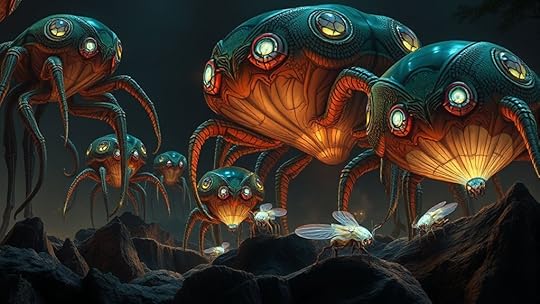
Future discoveries are likely to reveal species with a wide range of morphologies and sizes, challenging current expectations. Some may resemble cryptid sightings or mythological creatures, blending the fantastical with reality. You might encounter creatures that are massive, like towering sea monsters, or tiny, insect-like beings hiding in foliage. Morphologies could include elongated bodies, multiple limbs, or bioluminescent features. Sizes might vary from diminutive to colossal, defying typical classification. Here’s a glimpse:
MorphologySize RangeSerpentine, dragon-like formsLess than a meter to giants over 30 metersInsectoid or arachnid shapesMicroscopic to several meters in lengthAmphibian or aquatic shapesSmall to large, adaptable to environmentsMyth-inspired hybrid formsUnique combinations, unpredictable sizesTechnological Advances Facilitating the Census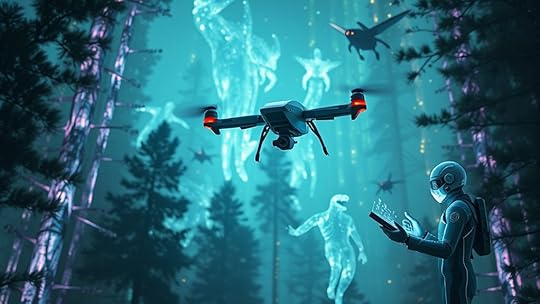
Technological advances are revolutionizing the way we detect and catalog unknown species, making it possible to identify even the most elusive organisms. Innovations like high-resolution remote sensing, AI-driven pattern recognition, and environmental DNA sampling enable you to uncover reptilian anomalies and aquatic mysteries that once escaped detection. These tools allow for detailed habitat analysis and real-time monitoring, accelerating the census process.
Enhanced imaging systems reveal hidden structures in dense ecosystemsAI algorithms identify subtle behavioral patterns in unknown speciesEDNA techniques detect traces of elusive organisms without direct sightingsAutonomous underwater and aerial drones explore inaccessible environmentsTogether, these technologies empower you to push beyond traditional limits, ensuring that no creature, no matter how rare or cryptic, remains undiscovered.
The Ecological Impact of Newly Discovered Species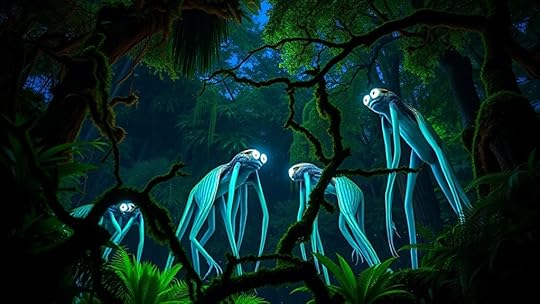
The technological breakthroughs in species detection are transforming our understanding of ecosystems by revealing organisms that were previously unknown. When new species emerge, they can profoundly influence ecological balance through their unique adaptations. These species often display remarkable adaptability, allowing them to thrive in changing environments and fill ecological niches left vacant or disturbed. Their presence can enhance ecological resilience by strengthening community stability and promoting recovery after disruptions. Conversely, some newly discovered species may disrupt existing interactions, outcompeting native organisms or introducing novel behaviors. Recognizing these impacts helps us better predict ecosystem responses and manage biodiversity. Ultimately, understanding the ecological roles of these unknown species allows us to anticipate shifts in ecosystem health and ensure more effective conservation strategies.
Challenges and Limitations in Forecasting New Species
Forecasting the emergence of new species presents significant challenges because many organisms remain undetected until they are well-established or cause noticeable ecological changes. Limited fossil records hinder understanding of early evolutionary pathways, making predictions uncertain. Without complete fossil evidence, you can’t fully trace how species develop or predict future divergences. Additionally, some species evolve through complex, unpredictable pathways, complicating forecasts. You might overlook cryptic or transient species that don’t leave clear traces. Environmental changes add further unpredictability, as they influence evolutionary processes unexpectedly. This complexity means your models must account for gaps in data and the unpredictable nature of evolution. Ultimately, incomplete records and complex pathways restrict your ability to accurately forecast species before they fully emerge.
Ethical Considerations in Encountering Unknown Life Forms
As researchers work to identify and understand new species, ethical questions naturally arise about how to interact with these unknown life forms. You must consider the ethical dilemmas involved in revealing their existence, making sure your actions don’t cause harm or distress. Your moral responsibilities extend beyond scientific curiosity; you’re accountable for respecting their autonomy and habitat. Deciding whether to document, preserve, or intervene involves weighing potential benefits against risks of disturbance or exploitation. Transparency and precaution are crucial, as hasty actions could threaten their survival or disrupt ecosystems. Recognizing your moral responsibilities helps guide responsible behavior, fostering respect for these creatures and avoiding unintended consequences of human interference. Steering through these ethical considerations ensures your pursuit of knowledge remains conscientious and humane.
Implications for Conservation and Biodiversity Strategies
Discovering unknown species challenges existing conservation efforts by highlighting gaps in our understanding of biodiversity. You must adapt strategies to account for species that migrate unpredictably or thrive in fragmented habitats. Recognizing these species helps refine protected areas and restore ecological corridors to support migration routes. Addressing habitat fragmentation becomes vital to prevent further loss of these species and maintain ecological resilience. You’ll need to incorporate new data and predictive models to stay ahead of these hidden threats. By doing so, you improve biodiversity preservation and reduce the risk of extinctions.
Enhance habitat connectivity to facilitate species migrationPrioritize research on fragmented habitats and their inhabitantsDevelop adaptive management plans for unknown speciesFoster community involvement to identify and protect elusive speciesFrequently Asked QuestionsHow Accurate Are Current Prediction Models for Undiscovered Species?Discovering unknown species reveals biodiversity gaps and urges adaptive strategies to protect elusive, fragmented habitats.
You might wonder how accurate current prediction models are for undiscovered species. These models rely on genetic sequencing and ecological modeling to estimate species existence and distribution. While they’re improving, they still face uncertainties due to incomplete data and complex ecosystems. You should recognize that predictions are helpful guides, but they aren’t foolproof. Ongoing advancements in genetic techniques and ecological understanding will gradually enhance the accuracy of these models.
What Are the Biggest Challenges in Identifying New Species?You might think finding new species is easy, but the biggest challenges lie in genetic analysis and habitat modeling. Sometimes, you overlook tiny genetic differences or habitats that seem identical but hide unseen creatures. Ironically, advanced technology can complicate things, making it harder to distinguish truly new species. You need meticulous research, patience, and innovative methods to overcome these hurdles and truly understand Earth’s hidden biodiversity.
Could Discovering These Species Pose Risks to Existing Ecosystems?Discovering new species can threaten ecosystem balance, as introducing unfamiliar organisms might disrupt existing food chains and habitat dynamics. You should also consider ethical implications, like potential harm to vulnerable species or ecosystems during discovery and study. If you’re involved in such research, weigh these risks carefully to prevent unintended consequences, ensuring that your actions support ecological stability and respect the integrity of the habitats you explore.
How Might New Species Influence Current Conservation Priorities?Think of new species as fresh threads in a tapestry, each influencing conservation priorities. You might find that these species boost genetic diversity, offering resilience against environmental changes. However, they could also tip the delicate ecosystem balance, prompting a shift in focus toward protecting these newly discovered organisms. Your conservation efforts will need to adapt, ensuring both existing and emerging species thrive without unraveling the intricate web of life.
Are There Ethical Concerns With Actively Searching for Unknown Creatures?You might wonder if actively searching for unknown creatures raises ethical dilemmas. It’s important to contemplate your moral responsibilities to avoid harming new species or disrupting their habitats. While discovery can benefit science, it also poses risks, so you should weigh the potential benefits against possible negative impacts. Ensuring respectful, responsible exploration helps balance your curiosity with the ethical duties you have towards preserving untouched ecosystems.
ConclusionWhile it’s natural to wonder if we really need to find more species, understanding these future discoveries helps you appreciate the importance of conservation. By predicting unseen creatures, you can better protect ecosystems before they’re lost. Don’t dismiss the unknown as irrelevant — it’s a chance for you to be part of the solution, ensuring biodiversity thrives. Embracing this future empowers you to help safeguard our planet’s rich, yet still mysterious, web of life.



